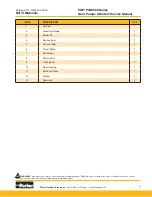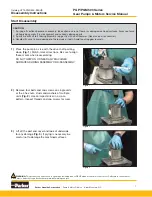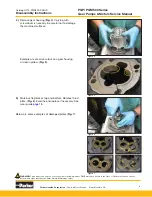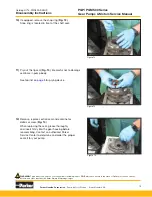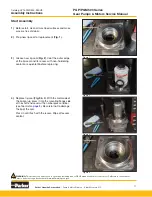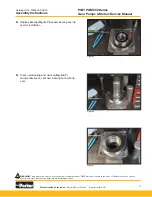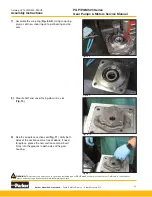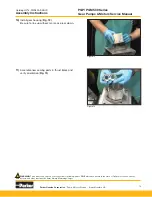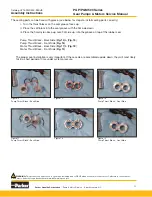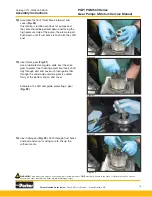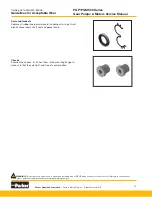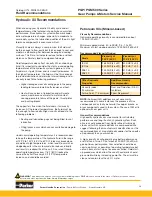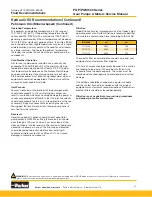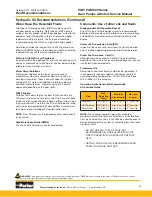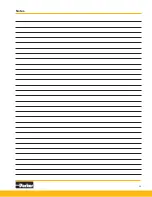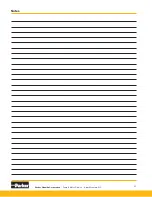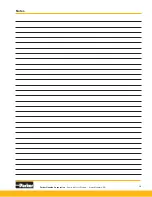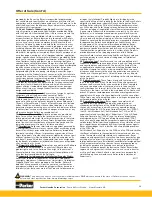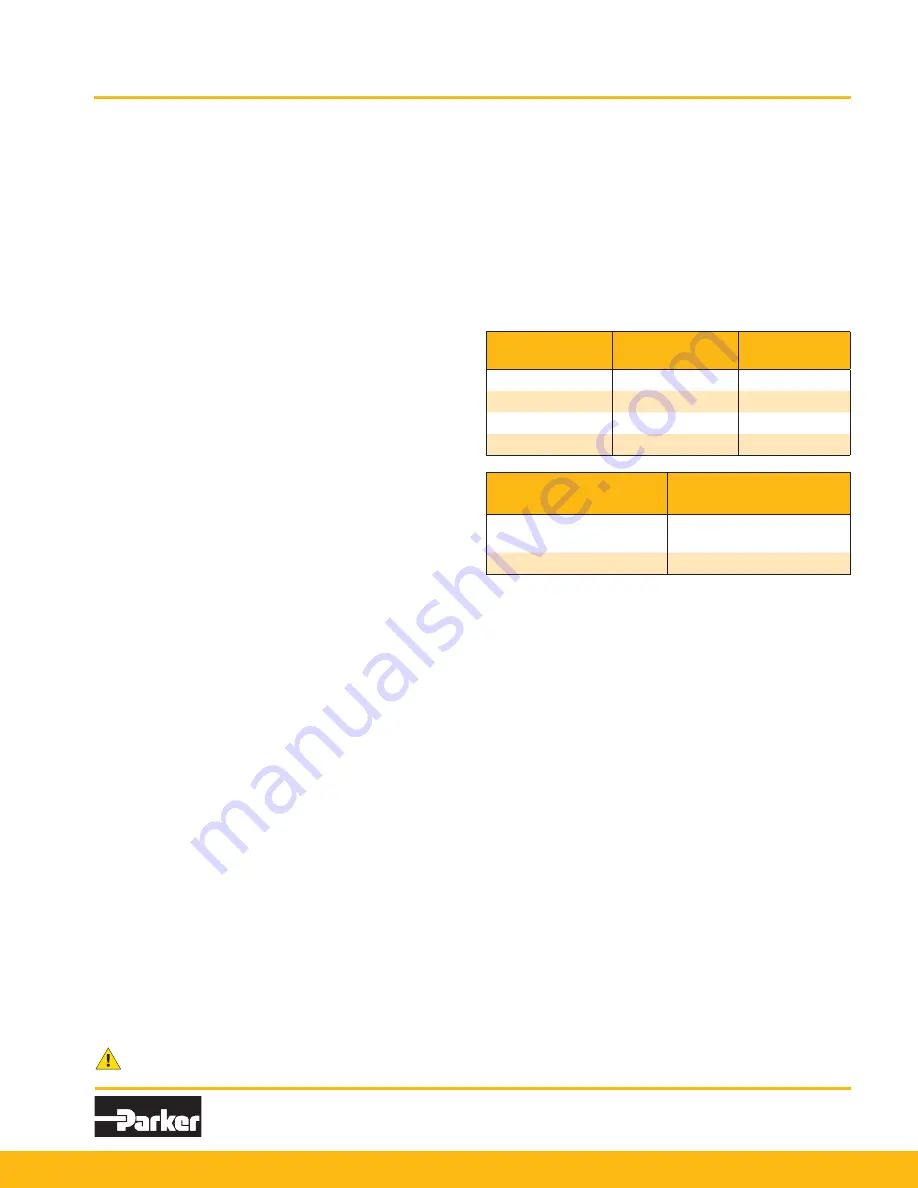
19
20
Parker Hannifin Corporation
|
Pump & Motor Division
|
Kings Mountain, NC
Parker Hannifin Corporation
|
Pump & Motor Division
|
Kings Mountain, NC
WARNING:
This product can expose you to chemicals including lead or DEHP which are known to the state of California to cause cancer,
birth defects, and other reproductive harm. www.p65warnings.ca.gov
WARNING:
This product can expose you to chemicals including lead or DEHP which are known to the state of California to cause cancer,
birth defects, and other reproductive harm. www.p65warnings.ca.gov
Catalog HY13-PMD500-SM/US
PGP/PGM 500 Series
Gear Pumps & Motors Service Manual
Fluid Recommendations
When choosing your Hydraulic Oil, duty cycle and oil
temperature must be factored in to optimize your system
performance. Since hydraulic systems often work under
extreme temperature changes, especially in moderate to
severe duty cycles, the lubrication qualities of the oil in tight
tolerance components is even more critical.
Viscosity choice is always a compromise; the fluid must
be thin enough to flow easily but thick enough to seal and
maintain a lubricating film between bearing and sealing
surfaces. This film of oil helps to reduce friction and heat,
which can ultimately lead to component damage.
Fluid temperature does affect viscosity. When choosing a
fluid, it is important to consider the start-up and operating
temperatures of the hydraulic system In general, as the
fluid warms, it gets thinner and its viscosity decreases. At
the highest temperatures, the fluid must be thick enough
to provide lubrication and minimize internal leakage. Low
viscosity leads to the following problems:
• Higher leakage across all sealing gaps in the pump
leading to lower volumetric efficiencies and heat.
• Heat will cause loss of lubrication and will create
severe wear because of metal to metal contact,
causing premature failure of the gears, thrust plates
and bushing blocks.
The opposite is true when the fluid cools, its viscosity
increases. At the lowest temperatures, the fluid must be
thin enough to flow readily. High viscosity oil leads to the
following problems:
• Sealing and lubrication gaps not being filled, loss of
lubrication
• Filling losses occur which causes cavitation damage to
the pump
Under normal operating temperatures it is recommended
to keep the temperature of the hydraulic fluid in the range
of 120°F to 140°F (49°C to 60°C). Fluids may break down
or oxidize at high temperatures, which leads to varnish or
sludge deposits in the system and also reduces lubricity
and results in reduced life of the unit. As a rule of thumb,
operating temperatures over 176°F (80°C) reduce the
service life by half for every 50°F (10°C) temperature
increase, and should be avoided.
Petroleum Oils (Mineral-based)
Viscosity Recommendations
Optimum operating viscosity is considered to be about
100 SUS (20 cSt).
Minimum approximately: 50 - 60 SUS (7.5 - 10 cSt)
Maximum at start up approximately: 7500 SUS (1600 cSt)
Recommended Viscosity Grades:
Grade
Viscosity at
100°F (40°C)
Viscosity at
210°F (100°C)
ISO 32
165 SUS (32 cSt)
44 SUS (5 cSt)
ISO 46
240 SUS (46 cSt)
49 SUS (7 cSt)
SAE 10
150 SUS (32 cSt)
41 SUS (4 cSt)
SAE 20
300 SUS (71 cSt)
51 SUS (7 cSt)
Other Desirable
Properties
Additives Usually
Recommended:
Viscosity Index:
90 minimum
Rust and Oxidation (R & O)
Inhibitors
Aniline Point: 175 minimum
Foam Depressant
NOTE:
Antiwear (AW) additives are not necessarily
recommended. In some instances the presence of zinc
compounds can actually be harmful to copper, bronze, or
brass components used in the system. The use of AW oil is
optional with our gear units.
General Recommendations
High quality hydraulic oils are essential for satisfactory
performance and long life of any hydraulic system. Such
oils are usually prepared from highly refined, turbine oil
stocks with which select additives are compounded. We
suggest following the manufacturer's specifications or the
recommendations of a reputable oil supplier for the specific
oil requirements on your machine.
A high viscosity oil will generally give better performance
and life than a thin oil. Oil of around 100 SUS (20 cSt) will
give optimum performance. Your selection should be as
near to optimum as possible at operating temperature but
not so heavy at start-up as to cause cavitation. Cold start-
up procedures which allow the use of heavier oils should
prove worthwhile by increasing pump life. The oil must be
clean and contain less than 0.1% water.
Hydraulic Oil Recommendations

